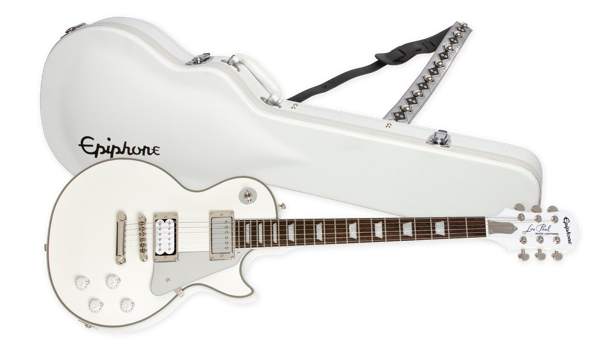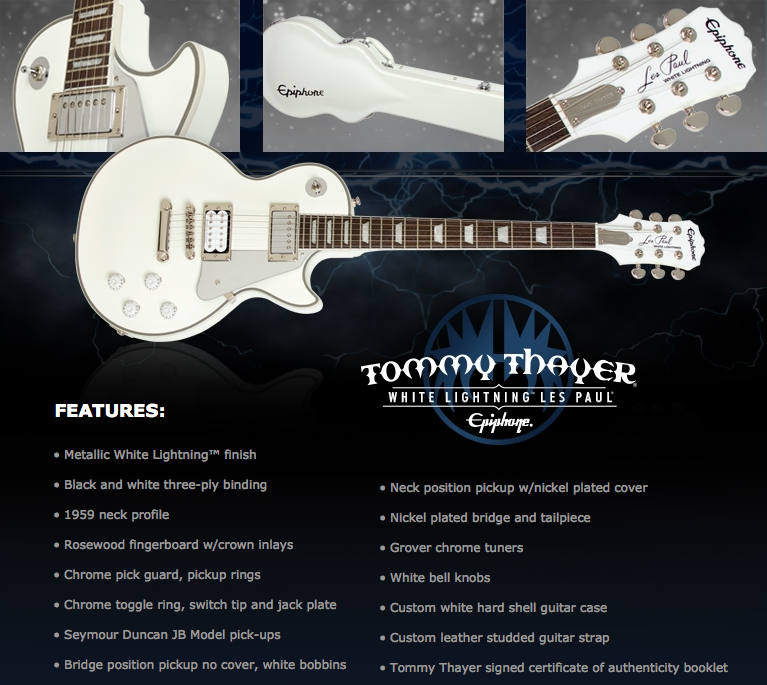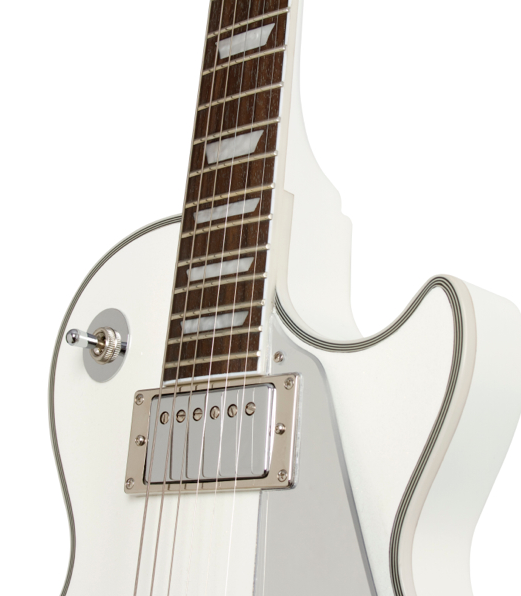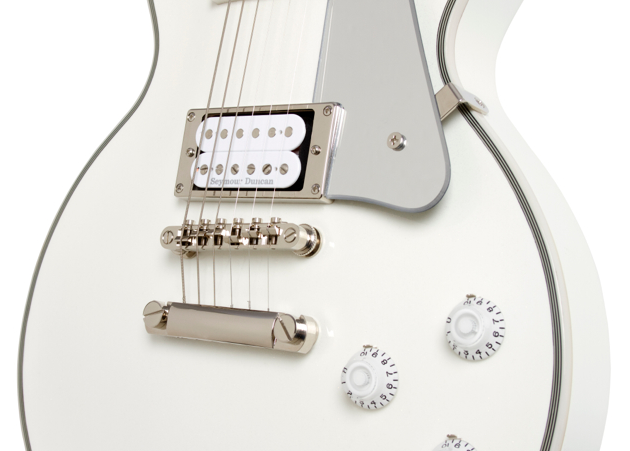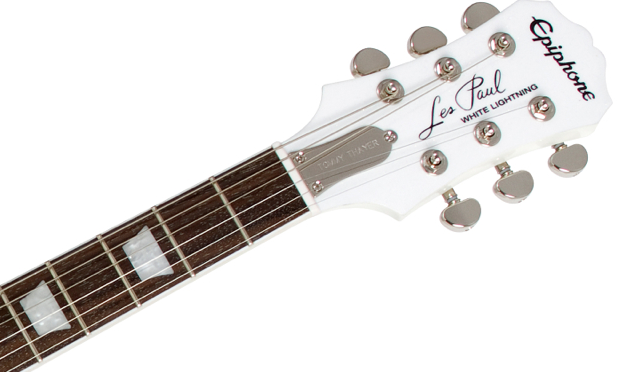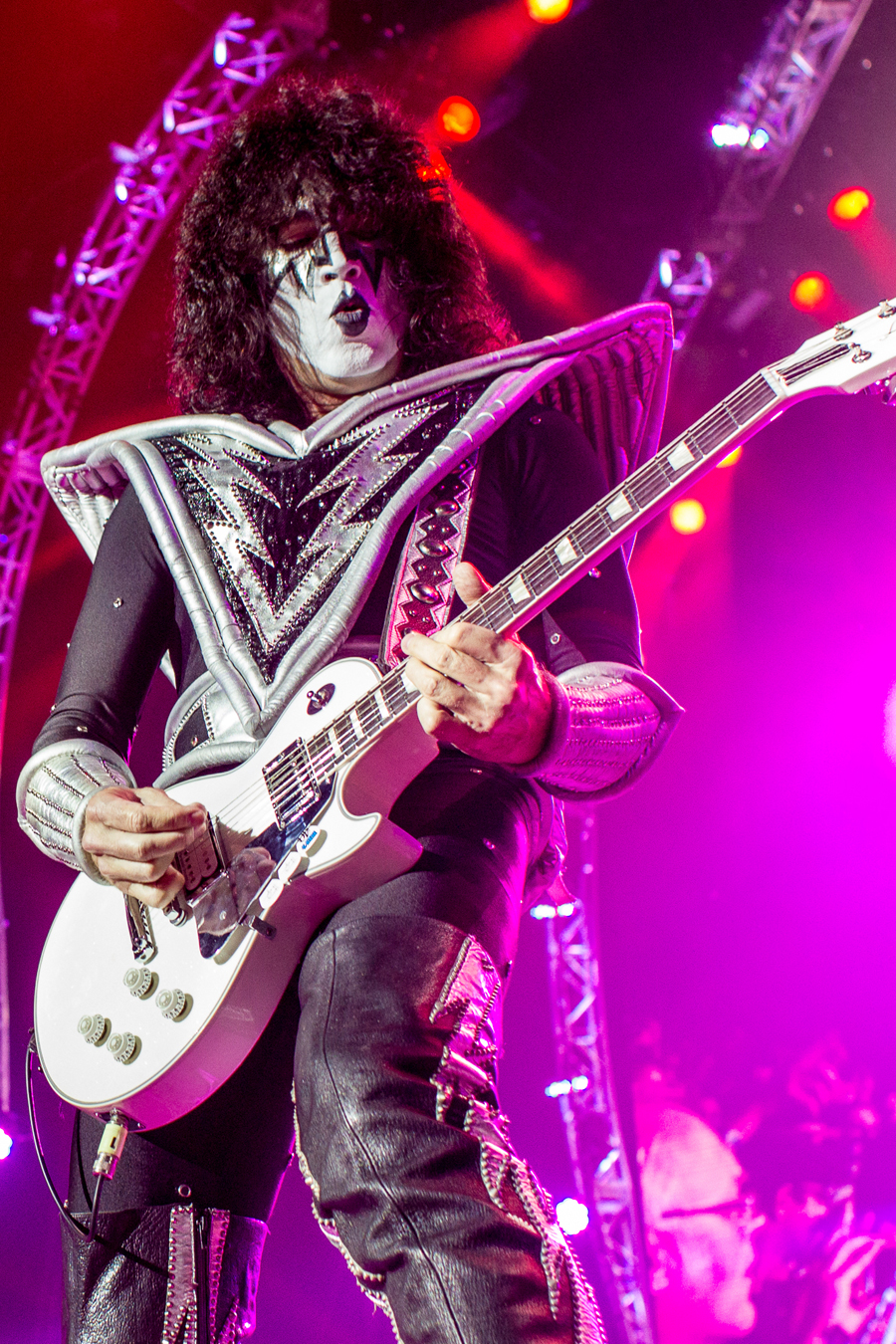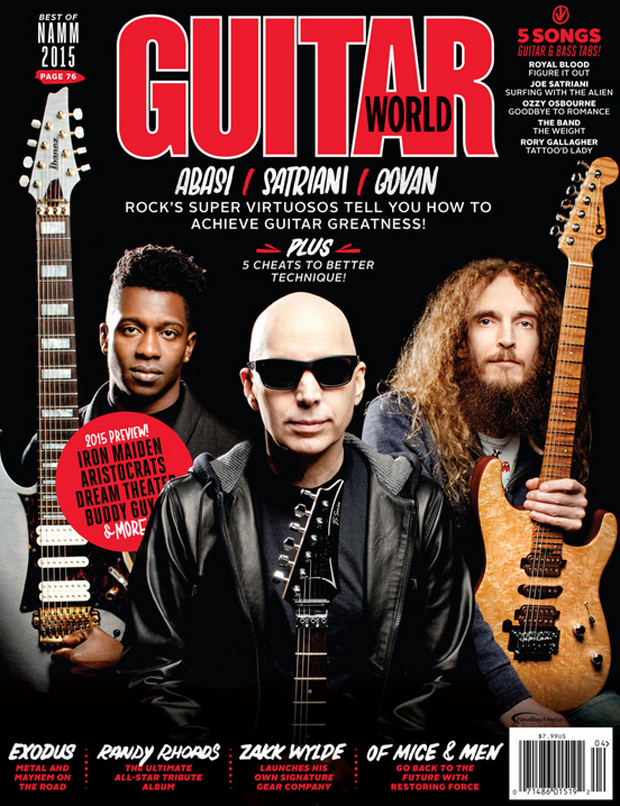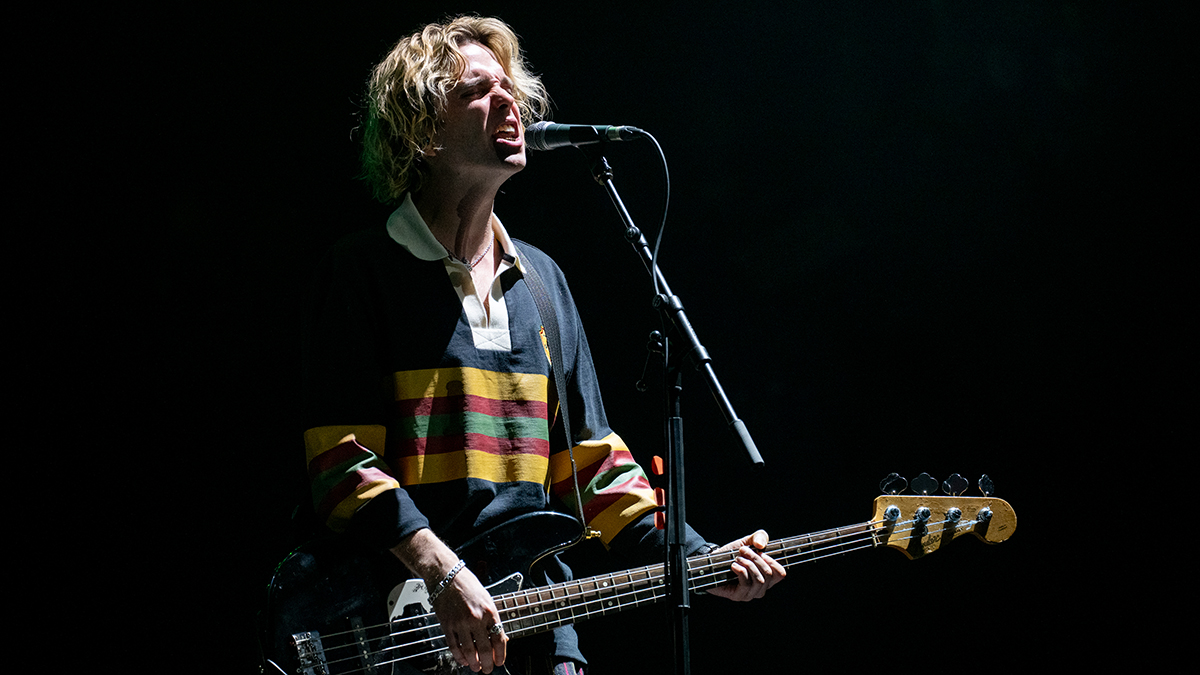Kiss Guitarist Tommy Thayer Discusses Epiphone White Lightning Les Paul, Momoiro Clover Z and More

Kiss guitarists and Les Pauls just seem to go together. Just ask Tommy Thayer, who just introduced his new Epiphone White Lightning Les Paul.
We caught up with Thayer—just days before he headed out on a whirlwind tour of Japan—to discuss the new guitar, Kiss and a whole lot more.
GUITAR WORLD: It’s been two years since you teamed up with Epiphone to release your signature Spaceman Les Paul. How is the new White Lightning Les Paul different?
There are a lot of similarities. The look, design and color scheme are different, obviously. The pickups are different too. In the last year or two, I started using Seymour Duncan JB pickups again.
I used them a long time ago. I was using Gibson pickups for a long time. I’m not sure why, but one day we put a set of JB’s back in the guitar and it sounded great. It was just one of those things where you are chasing the sound; it was something different that peaked my interest.
As far as the neck and the body shape, is it pretty similar to your other model?
It is. The neck is the same. It's somewhere between a 1960 and a 1959 profile. It’s not a baseball bat, but it’s not super-thin either. It’s kind of in between, which I like more. The cool thing is it has this great white metallic finish [see the photo gallery below]. It’s a really stark white. It isn’t a pearl color like some of the Gibson Custom models. I wanted it to be a really striking guitar that would look great on stage. I wanted to have all the chrome parts to offset that.
All the latest guitar news, interviews, lessons, reviews, deals and more, direct to your inbox!
The pickup rings and pick guard are all chrome. Originally the idea was to do a chrome binding as well. It became difficult even for Gibson to figure out exactly how to do that. When they did the original two guitars last summer, the ones that were the inspiration for the Epiphone, we couldn’t figure out how to do a chrome binding. I ended up using a three-ply black-and-white binding, which actually was a better idea. I think it looks great.
I think any manufacturer would admit it’s hard to get chrome on wood.
They cut those Les Paul shapes out of wood and they leave a strip or a channel on it for the binding. Even before they paint them, they put the binding on and they sand them with the binding on. That’s the traditional process and why it was so difficult to do with chrome. It was funny; we went back and forth with Gibson for months trying to figure out what to do. It turned out great in the long run.
On the Spaceman Epiphone, you had gone back and forth with Epiphone on the size of the flake. When you are doing a finish like this and you're playing on one of the biggest stages with the lights, do you have to play around with and give consideration to how these guitars look on stage?
Absolutely. It’s very important to have a guitar that on stage pops out and looks like it works on a Kiss stage. A lot of that is taken into consideration. It’s a very flamboyant, theatrical show so you need flamboyant, theatrical guitars. Coincidentally, that is the kind of guitar I like the looks of anyway. I’m sure Paul [Stanley] and Gene [Simmons] feel the same way. You don’t want to just do something plain or generic. You need some pop to it. We know what works by experience.
Are you a tinkerer, guitar-wise? Do you mess around with a lot of configurations, or do you have a pretty good handle on what you like?
I used to do a little bit of that back in the old days. I messed up a couple of good guitars fooling around. I had a few Les Paul Jr’s., a ‘58 or '59 Sunburst Jr., and I took the pickup out of it and I don’t know what I did. I did stuff you shouldn’t do by today’s standards with vintage guitars. That was 30 or 35 years ago. There was a point where I had a few Strats, even though I was always more of a Les Paul guy, and I messed around with the necks and parts. These days I try to stay away from that stuff and let others deal with that. I’m not really interested in messing around and tinkering. I just like to play them.
In the Eighties, there was a dip in the vintage guitar market with everyone going to the “super” Strats. The guitars everyone prizes now weren’t quite as valuable back then, and people took a lot of liberties with those guitars that they wouldn’t dare now.
There was a time in the Eighties when no one wanted Les Pauls. Everyone wanted Charvels and Jacksons. I actually bought one of my best guitars back then. This one was a ‘72 Deluxe that was routed out for regular humbuckers. I bought it at this guitar shop in Hollywood in 1985 or 1986 for like $350. No one wanted them, but I sure did and I took advantage of the great prices. By the time Guns N' Roses came out, things changed and Gibsons became real popular again.
This is your 12th or 13th year with Kiss if I’m not mistaken.
It’s not exactly clear when I started. The first gig I did with them was in 2002 as a filling-in situation. The first official gig was in early 2003. It could be 12 or 13, depending on how you look at it.
You guys have a lot of tour dates coming up including Japan, and you're hitting every continent outside of Antarctica. Is the entire year mapped out at this point?
This year is fairly well mapped out, even though we haven’t announced what is going on specifically later this year. It is primarily international tour dates, which starts in Japan for a few weeks. By the way, we have a Number 1 single in Japan right now with Momoiro Clover Z [a female Japanese band].
How did that come together?
That was very interesting. I don’t even know whose idea it was. There is a teen idol band over there called Momoiro Clover Z. They are all in their late teens and early 20s. You wouldn’t know it; they look like they're about 13 [laughs]. We did a collaboration with them, and it’s very Kiss and has a very Japanese flavor and taste to it. We filmed the video for the song, which is spectacular. It’s become very popular over there now and has gone to Number 1.
You guys are also doing South America pretty hard. Are there places you still haven't gone?
I’ve been there on two or three tours with Kiss, and it's a mega-market for us. In April we are doing several weeks. I think we are doing about five in Brazil and going to a couple of places we haven’t been before. We haven’t played Montevideo, Uruguay. There might be a couple others. It seems we have covered every country down there at one time or another. It is really over the top down there. The fans are crazy, crazier than almost anywhere in the world. Kiss fans are crazy everywhere, but down there is especially insane.
During the tour, are you able to get away and enjoy some of the culture of the places you visit?
I like to do that, actually. I’m not a stay-in-the-hotel-room guy. Sometimes it’s a little bit of a challenge because you are traveling on days off. A lot of times you just need to rest. Some days you just have to recharge the batteries. Other days getting out seeing the culture and the people and enjoying the food is exciting. It is an amazing opportunity when you do these tours because you go to places you may not otherwise have the chance to visit. We are lucky in that regard. I like to regard those extra pleasures along the way.
Kiss kick off their South American tour April 10 in Bogota, Colombia and have 10 shows planned in South America, culminating with Monsters of Rock in Sao Paulo, Brazil. They return to Europe in May with dates throughout June, and they're back Australia in October. Visit tommythayerguitar.com for more info about Thayer’s White Lightening Les Paul. Visit kissonline.com for more about Kiss.
John Katic is a writer and podcaster who founded the Iron City Rocks podcast in 2009. It features interviews with countless rock, hard rock, metal and blues artists.
